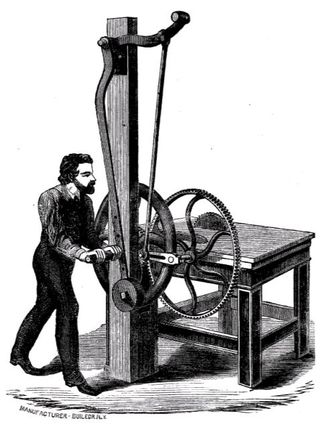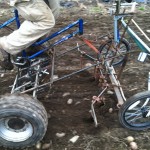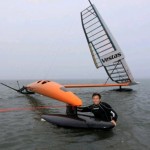 “In the science and practice of mechanics, there are well-known devices which are used as reservoirs of power, among which may be mentioned adjustable and automatically moving weights, the swing of the pendulum, and the continued rotation of the balance wheel, when once put in motion. The machine shown in the accompanying engraving is an illustration of the adaptation of means to an end. It is a hand-sawing machine, carrying a circular saw, which may be run by the power of one man or even a stout boy.”
“In the science and practice of mechanics, there are well-known devices which are used as reservoirs of power, among which may be mentioned adjustable and automatically moving weights, the swing of the pendulum, and the continued rotation of the balance wheel, when once put in motion. The machine shown in the accompanying engraving is an illustration of the adaptation of means to an end. It is a hand-sawing machine, carrying a circular saw, which may be run by the power of one man or even a stout boy.”
“The ease of running the machine and the rapidity of its work are truly
surprising. A full-sized machine can be run by a workman with one hand,
while another can with ease drive the saw through hard, seasoned plank
four inches thick. Altough this machine is represented as being
exclusively used for sawing, the principle is capable of being extended
and applied in various ways, and may be used wherever power is needed;
for instance, to run gigsaws, lathes, boring-machines, mining-drills,
printing presses, and the like.”
“The power is applied, as seen, by means of a long pendulum lever swung back and forth, and having attached to its short arms, at the top, a pitman, connected at its other end with a wrist-pin on a balanced gear. This gear meshes with a pinion on the saw-arbor, which also carries a balance-wheel intended to equalize the motion. These are the principal parts of the machine, which is very simple, and not liable to become deranged. If only one man operates the machine, where little power is required, a treadle is attached to the saw-frame, its pitman being attached to the crank of the flywheel. This can be instantly unhooked, as when two persons are at work, one being engaged in the propelling the saw by the pendulum-lever, and the other guiding the stuff to be sawn.”
Quoted from: The Manufacturer and Builder Volume 0001 Issue 2 (February 1869).





